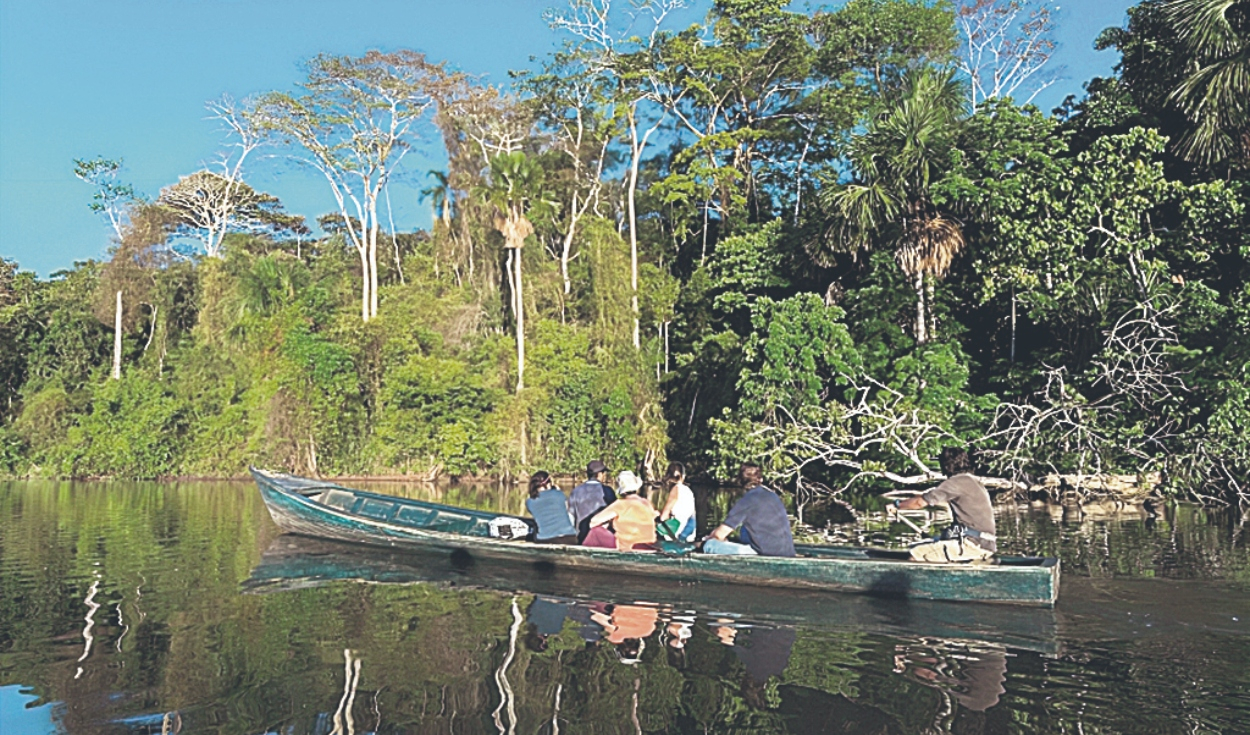
Peru currently imports US$2 billion in wood and derivatives. However, it has the potential to grow its own wood. Samuel Dyer, president of Grupo Pro Amazonía, points out that “just one and a half million pieces of wood grown in the Amazon would contribute between US$20,000 and US$30,000 million to the annual GDP, being “more promising than the entire Peruvian agribusiness.” This would translate into additional income to the estimated value it has today.
According to César Quispe, vice minister of Mype and Industry of the Ministry of Production, the economic activities of the Amazon generate more than S/66,755 million, according to figures up to 2023, thus representing 4.2% of the Gross Domestic Product. (GDP) national total.
Within these activities, 83% of income is concentrated in the commerce and services sectors. Likewise, in the last five years, Amazon exports increased at a rate of 19.6% annually, amounting to US$771 million FOB in 2023.
While mining and hydrocarbon products represent 49% of the exported value, agroindustrial, manufacturing and fishing products represent 51%. Thus, the exported value contributes 1.2% of the total value of national exports.
Ecological train
The Congress of Amazonian Entrepreneurs (CEA) promoted the idea of an ecological train that would allow the competitiveness of the Amazon to develop. And by closing the existing connectivity gaps, different products – including cultivated wood – can be transported in less time and with a greater load.
“60% of the world’s wood is already cultivated and it is estimated that in 2050, this would be 98% or 100%. In this way, thousands of jobs will be generated because it is exported with added value, thus being part of the circular economy. However, for this to work, connectivity needs to be improved,” Dyer told La República.
The proposed ecological train would comprise 3,671km in total and would go from Pucallpa to the Pacific Ocean, integrating Brazil, Junín, Huánuco, Pasco, San Martín, Amazonas, Loreto, Cajamarca and Piura.
Among the benefits it would bring would be its small contribution to CO2 emissions, being less than 2% of the transport sector. In addition, it is up to five times more efficient than the road, water or air system and its infrastructure occupies between two and three times less land per unit of cargo or passenger than other means.
In that sense, in order to carry out the project, a concession would be sought through a transparent bidding with the objective that the investment is purely private.
However, there are different aspects that limit the participation of private investors.
Obstacles
The conditions of illegality and informality, with almost 9 out of every 10 jobs in the Amazon being informal, as well as the lack of definition of land tenure and ownership and the gaps in connectivity, water and sanitation, depress private investments. , corporate and formal communal, thus keeping economic activities limited.
Although the problems and shortcomings to be addressed are extensive, the Ministry of Housing, Construction and Sanitation is seeking to develop public-private projects for the implementation of wastewater treatment plants in Puerto Maldonado and San Martín, totaling around S/904 millions. The completion of both works would benefit more than 707,000 people.
Likewise, in San Martín, drinking water and sanitary sewage services are also being improved on the main access roads to the Partido Alto and La Hoyada sectors, with an investment cost of S/12.5 million. This would benefit 4,000 people.
Record global cocoa and coffee prices
The high prices of coffee and cocoa in the first quarter of 2024 boosted exports from the Amazon region by 16%, reported the Ministry of Foreign Trade and Tourism (Mincetur). In that period alone, US$206 million in derived income were recorded.
The Vice Minister of Foreign Trade, Teresa Mera, explained that, throughout 2023, shipments of almost US$835 million were recorded, as a result of the agroindustrial, forestry, mining and hydrocarbon supply.
Mincetur hopes to integrate the Chancay megaport with the exportable offer of San Martín, Ucayali, Loreto, Madre de Dios and Amazonas, through IIRSA Sur and IIRSA Norte.
Fact
83% of the income from economic activities in the Amazon is concentrated in commerce and services.
Source: Larepublica
Alia is a professional author and journalist, working at 247 news agency. She writes on various topics from economy news to general interest pieces, providing readers with relevant and informative content. With years of experience, she brings a unique perspective and in-depth analysis to her work.












